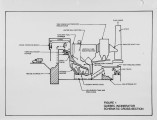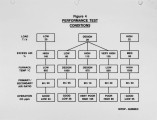| Title |
The National Incinerator Testing Evaluation Program |
| Creator |
Klicius, R. ; Finkelstein, A. ; Hay, D. J. |
| Publisher |
University of Utah |
| Date |
1987 |
| Spatial Coverage |
presented at Palm Springs, California |
| Abstract |
This paper focusses mainly on the important modifications and the extensive combustion test program recently completed on a state-of-the-art mass-burning incinerator design located in Quebec City, burning municipal solid waste. Today's modern industrialized society is a generator of substantial quantities of municipal solid waste (MSW). Conservative estimates put per capita generation at about 1.8 kg per day or approximately 16 million tonnes per year for all of Canada, most of which ends up in landfills. The increasing cost and complexity of 1andfilling MSW, combined with the difficulties of locating new sites, have forced municipalities to seriously consider alternatives such as incineration in energy-from-waste facilities. Incineration reduces the volume of waste to be 1andfil1ed by up to 90%, extending the life of existing sites and reducing the need for new ones. These facilities also offer the option of generating revenue through energy production. One question that is raised repeatedly with both existing and proposed EFW facilities is how safe are the emissions produced. Many synthetic and toxic chemicals, ingredients which support contemporary lifestyles, end up in the waste as used or unwanted consumer products. Uncontrolled burning of these products and their packaging can release emissions of toxic trace organics and heavy metals. Addressing these issues and many others is the objective of the multi-faceted National Incinerator Testing and Evaluation Program (NITEP). The five-year program is mandated: to identify energy-from-waste technologies in Canada, to assess relationships among state-of-the-art designs, operations, energy benefits and emissions; to examine effectivness of emission control systems and to provide input to National Guidelines for Emissions. To date, the combustion assessment component of the program has successfully completed work on a modular two-stage design in Prince Edward Island (PEl) and on two different types of air pollution control systems in Quebec City, and on mass burning technology which is the subject of this report. |
| Type |
Text |
| Format |
application/pdf |
| Language |
eng |
| Rights |
This material may be protected by copyright. Permission required for use in any form. For further information please contact the American Flame Research Committee. |
| Conversion Specifications |
Original scanned with Canon EOS-1Ds Mark II, 16.7 megapixel digital camera and saved as 400 ppi uncompressed TIFF, 16 bit depth. |
| Scanning Technician |
Cliodhna Davis |
| ARK |
ark:/87278/s6w098h1 |
| Setname |
uu_afrc |
| ID |
4287 |
| Reference URL |
https://collections.lib.utah.edu/ark:/87278/s6w098h1 |















